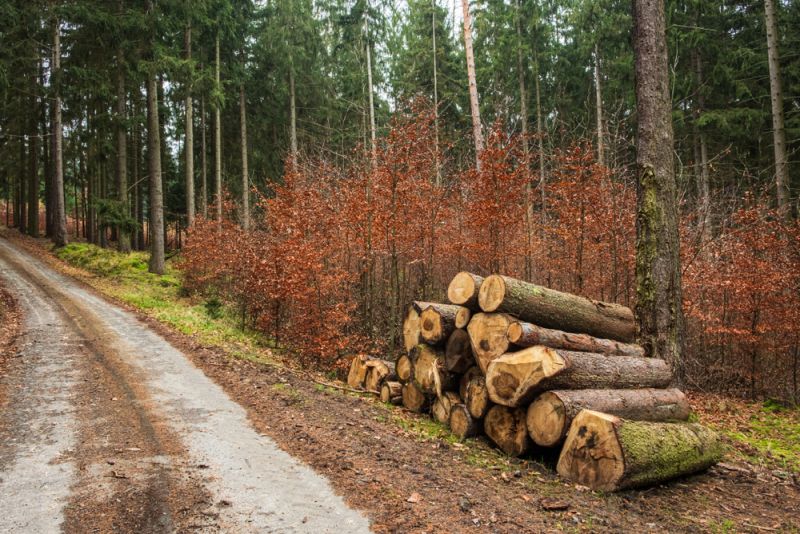Not so long ago, activated carbon was a common cure for many different ailment as well as a common household staple. Old habits and remedies should be revived: they are based on natural solutions much safer for our health than anything nowadays industries are offering us.
If you know how to use activated carbon, you might revert serious health problems now as well as prevent some of the worst ones that can occur anytime in your life.
If you want a good “multi-use” item in your medicine kit, activated carbon is the one to carry.
From removing ingested poison from stomach to air and water filtration, keep reading to find out the top 12 uses for activated charcoal.
Remove Ingested Poison from Stomach
No matter how hard you try, there are going to be times when you consume something that will present a danger to your health. By the same token, if you have livestock or other animals living with you, there is also a chance they will ingest some kind of poison that needs to be absorbed by a media such as activated carbon.
Fortunately, making and using activated carbon for this purpose uses the same basic process as you would use for most other purposes. You may also want to purchase pre-manufactured activated carbon at a local pharmacy that is made for this purpose.
Discover the survival things the Pioneers took with them when they traveled for months!
Reduce Gas Reflux and Stomach Bloating
Given the number of toxins and dangerous additives in modern foods, it should come as no surprise that acid reflux and stomach bloating are on the rise. When you factor in side effects from various drugs, this situation gets even worse.
During a major social collapse or other crisis, you may wind up consuming other foods that irritate your stomach simply because you have no choice. These and many other situations may be made even worse because you may not have any remedies on hand to deal with the situation. Activated carbon capsules can help reduce both stomach bloat and acid.
Aquarium Filtration
If you are going to grow your own food, aquariums and fish ponds are likely to be part of your plans. Even if you choose not to eat the fish, you will still need waste from them for hydroponics and other forms of fertilizer.
Large numbers of fish are hard to keep in a smaller area without the use of activated carbon.
Here are some ways activated carbon makes it easier to start and maintain a healthy aquarium or fish pond:
- Activated carbon helps remove gas based fish waste from the water.
- When aquarium and pond water is cleaner, there is a less chance of toxic algae buildup.
- Water that is full of toxins increases the risk of fish disease. Given that some fish carry TB and other illnesses, you will not want to take this kind of chance, especially if you are planning to eat the fish or use the water to fertilize plants.
- When aquarium water is full of fish waste or other toxins, the fish will be less likely to breed and produce healthy offspring. While this may not be of much concern while you can still buy fish, it will most certainly be a problem when you must replace them in a crisis situation.
- Aquarium and pond water are notorious for pulling toxins from the air. As a result, if the area is polluted, you can rest assured that the water in the aquarium is also in bad condition. Activated carbon will pull these toxins from the water and help ensure your fish remain as healthy as possible.
To use activated carbon for this purpose, just break bigger pieces down to about the size of a pea and add them to the air filter.
I have used bubble filters for decades in my aquariums and have never needed to buy pre-fabricated cartridges for them.
If you plan to use bigger or stronger power filters, then you may need to find some way to refill the cartridge once the activated carbon needs replacing. Some aquarists say it is possible to reuse the carbon after heating it up and letting it dry out. I have never gotten this or other variations to work properly.
Keep Your Teeth Clean
Many people are surprised to learn that activated carbon can remove all kinds of stains and hidden debris from teeth. No matter whether you want to whiten your teeth or keep them clean without using toothpaste, activated carbon will be very useful.
All you need to do is grind the activated carbon down to a powder and mix it with some water. Let the black paste sit on your teeth for a minute or so, brush, and then rinse off as you would any other toothpaste. Since activated carbon doesn’t have a good taste or texture, you may want to follow up with a peppermint wash or something else that helps you feel more comfortable.
You can use baking soda as toothpaste and then follow up with activated carbon now as well as during a major disaster.
Modern toothpaste is filled with carcinogens and other dangerous toxins. As with the air and water, more than a few of the chronic illnesses you are dealing with right now may be made worse by toothpaste.
Give activated carbon a try and see how you feel both from a dental and physical perspective. Remember, cavities and other dental diseases don’t just come from bad dental hygiene. They also come from making bad food choices and ingesting chemicals that do harm to the enamel on your teeth.
Ask your dentist about the benefits of using activated carbon as a toothpaste replacer, as well as what you can do to make your own toothpaste so that you can avoid all the toxins in modern formulas.
If your dentist says that modern toothpaste is an absolute necessity for dental health, bring with you a list of all the ingredients in the toothpaste, and the studies that prove one or more is carcinogenic. As strange as it may sound, if you wind up needing to get a second opinion, this may be better than going on with a growing health problem that you weren’t aware of.
Video first seen on Silke Dewulf.
Remove Pesticides from Soil
If you thought air and water pollution were bad, you may not realize that soil pollution is just as bad. Runoff from commercial farms and factories as well as pollution falling from the air all lead to soil based problems miles away from the initial site of contaminant release.
Once activated carbon touches something, it will begin leaching various chemicals from it. In this case, if you mix activated carbon into the soil, it will pull out pesticides and other dangerous toxins.
Personally, I would recommend using blocks or sheets of carbon for this purpose. You can try them a the surface level, or bury them in layers in order to give the chemicals a chance to leach through to the carbon layers.
Later on, you will need to remove the carbon so that the plants don’t break it down and release the pesticides right back into the soil.
Remember, activated carbon doesn’t break chemicals down, it is simply a very porous medium that acts as a storage container. You will still have to remove the carbon from the soil to completely get rid of the pesticide and other toxins.
Air Filtration
Do you ever notice that when you travel to certain areas, the air smells really bad? Do you also notice that this sensation seems to fade after a few days? The air around you is so dirty it is probably making you and your family members very sick even though your nose had adapted to it.
From higher volumes of cars passing to garbage dumps and industrial smokestacks, there are actually very few places left where there is safe, clean air to breathe. Here are just a few contaminants that trigger everything from asthma to increased risk of panic attacks, heart problems, and other diseases:
- Aside from carbon monoxide, automobiles also release other dangerous chemicals into the air, and some of them are known to trigger asthma and other breathing disorders.
- Medical waste and rubbish dumps release dangerous chemicals into the air. If you smell something bad in the air when downwind of a dump, then this is the natural gas released by the piles of garbage. The dump may also be releasing all kinds of chemicals created when trash mixes together and new substances begin to form. You can’t tell just how many of these substances cause cancer or other health problems simply because you inhaled the disgusting odor of rotting trash.
- Factories and power plants also release volatile organic compounds and other chemicals into the air. You may be able to smell some of them, while others are odorless.
If you spend the money and time to build an air quality sensor capable of detecting specific chemicals, you’ll be amazed at how dangerous the air around you really is. It will get much worse after a crisis because of increased numbers of fires and a lack of tools, labor, and resources required to manage dangerous chemicals.
Activated carbon can be used to remove most volatile organic compounds, and many other chemical based contaminants from the air. In fact, if you suffer from chronic medical problems, you might need a pre-fabricated carbon filter attached to a fan or some other source of air flow. Aside from cleaner smelling air, it will ease your health problems.
If you are concerned about gas attacks or other social collapse related scenarios – these kinds of filters will be essential if you plan to stay in your home. While there is much more to prepping for an air quality related disaster, activated carbon filters are a good place to start.
There are a number of furnace filters available that have activated carbon in them. In most cases, these are little more than a liquid solution of activated carbon added to the filter media.
You can try experimenting with your own versions to see if you can get a filter that effectively removes odors (and therefore their cause) from the air.
DIY Respirators and Gas Masks
Even if you could seal off your home entirely from the outside world, it would not be a feasible option. Gases and bio weapons will easily seep through even the tiniest crack and can be devastating, and there will also be times when you have to leave your location. And if you are away from your bug out location, you’ll need to protect your lungs as much as possible.
These are reasons why making and wearing a viable gas mask or respirator is very important. As with air filters, activated carbon offers the widest range of protection against a range of chemicals.
Considering the rising rate of smog and other air pollutants, activated carbon masks are also very important for improving and maintaining a reasonable level of health. For example, in many Asian countries, people don’t go outdoors or exercise without wearing an activated carbon mask.
While this is a fairly rare sight in the United States, those who know the truth are doing the exact same thing. If you have asthma or other chronic breathing problems, even a surgical style mask with activated carbon in it can make a big difference.
I have personally noticed a 50% reduction in noxious odors from insecticides, smog, and other fumes when wearing this kind of mask. Others that have tried them notice a 70% or better reduction. While I have not tried the wrap-around designs more common in Asian countries, I suspect they would be more effective because they would seal off the areas where I tend to get the most air leaks.
A surgical style activated carbon mask is better than nothing, however you will need a more robust respirator design for gas attacks and other dangerous situations.
Just remember to practice breathing with these masks, and they can and do restrict air flow. Also make sure you keep the mask clean and change the cartridges on a regular basis. As good as activated carbon is at filtering out many kinds of chemicals, the pores in it still fill up quickly, hence the need to replace the cartridges often.
You can and should try taking used cartridges apart to see if you can find a way to refill the activated carbon part. Even if you cannot obtain or make the other filter media, at least you may be able to keep this vital part of the mask working for a longer period of time.
Filter Water
As a prepper, you may already be giving a lot more thought to water quality than air quality, but activated carbon isn’t only useful for removing the bad taste from water after it has been boiled. That bad taste is an indicator that the water isn’t as clean as you think it is.
Boiling water will kill off bacteria, however it will actually cause an increase in the concentration of heavy metals, pesticides, and even dangerous drugs that have leached into just about every potable water supply at the surface level. While activated carbon will not remove all heavy metals, it is excellent for removing most other dangerous chemicals and drugs.
Typically, filtering water with activated carbon is a lot easier than filtering air. At the simplest, just add some activated carbon to a clean sock and pour the water through it. You can also make your own cartridges and add a pump for larger volumes of water.
When designing your own system, don’t forget to make it easy to change the cartridge as well as detect when it needs to be changed. Since many water quality issues reflect in changes in pH, you may want to try building a pH sensor into your system so that you know when to change the filter.
Video first seen on MakerBoat.
Preserve Papers
If you have books, paper based maps, or other important documents in your stockpile, it is very important to keep them free of air based chemicals that will do damage to them.
While a ziploc bag can be very useful, adding some activated carbon to the bag will also ensure the paper does not break down as quickly.
Remove Odor From Fabrics
Today, many people still use moth balls and other camphor based products to store clothes away for long periods of time. Aside from making your clothes very smelly, many of these products can also be very dangerous to your health.
If you want to keep clothes in your stockpile odor free, activated carbon may be of some help. If you routinely have bad smelling clothes, adding some activated carbon to the wash will also get rid of the problem.
You can make activated carbon sachets from nylon stockings (or very thin socks) and aquarium carbon, or buy them pre-made at the pet store.
Scent Block for Hunting
More than a few hunters have lost a chance to capture dinner because the target animal got a whiff of the hunter when the breeze changed. Since most animals are afraid of human scent, even a slight breeze can cause problems.
Today, a number of hunting supply stores sell activated carbon solutions that will absorb body odors before they can be carried to the animal. You can also grind activated carbon into a powder and mix it with water.
Next, just dip your clothes in the solution and let them dry. Even though there is some controversy over whether this actually works, there is no harm in giving it a try, especially if you know or suspect that scent related issues are interfering with the hunt.
More than a few hunters also store their clothes in activated carbon in order to prevent other odors from getting into the clothes.
Tip: if you have been using the same clothes for years, and took a lot of time making sure they absorbed the scent of the woods, this can help prevent that from being disrupted. All you need to do is add a few sachets of activated carbon to the bag or box and store away until needed for the next season.
Video first seen on Cabela’s Hunting.
Manage Stings and Insect Bites
Bee stings and insect bites can become infected as well as cause a lot of pain and irritation. While activated carbon will not stop an infection, it can pull out the venom from stings and small bites. Just apply the activated carbon to the skin and let it absorb the venom.
If you are allergic to bees or other insects, it is still very important to use an Epi-pen or other neutralizers that have a known track record for reliably managing this problem.
Activated carbon will not work for snake bites. Insect bites have much smaller amounts of venom than a snakebite. You can try a moist chewing tobacco bandage for snakebite and a constriction band above the site of a snakebite. You will still need the proper anti-venom to treat this condition.
Now that you know how to use activated charcoal, discover more valuable survival secrets from our forefathers.
Click the banner below for more!










Pingback:10 Fundamentals Of Air Purification That Could Save Your Life | Survivopedia | November 29, 2018
|